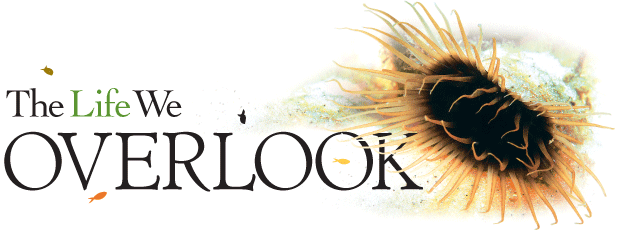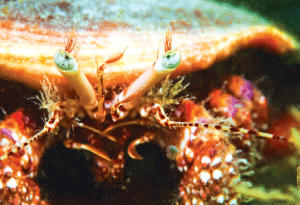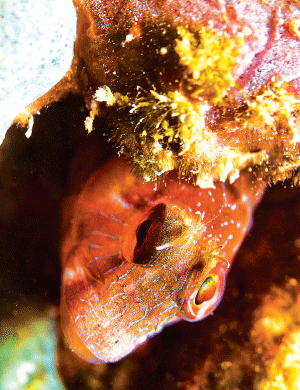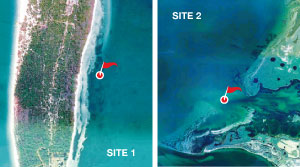
Above: A tube anemone waits for a tasty morsel to drift by its hiding spot near Egmont Key.
By Jimmy White

The most productive parts of Tampa Bay are areas where sunlight penetrates the water far enough to reach the bottom and allow seagrasses to grow. A diverse cross-section of plants and animals exist in and around these submarine meadows. Many live in the seagrasses their entire lives while others merely use them as cover to travel between habitats.
So many plants and animals rely on this habitat at some point in their lives that describing them all could literally fill volumes. In fact, seagrass meadows are considered to be the keystone habitat in Tampa Bay – the canary in the coal mine pointing to the success of ongoing restoration efforts.
Despite the obvious importance of this habitat, there is a lack of photographic documentation of the animals living there. This shortcoming may be caused by the abundance of more glamorous subjects – or it may be that many of the animals found in seagrass meadows have developed sophisticated camouflage techniques that make them challenging to locate and photograph.

Two sites were selected for this project. Site 1 was on the eastern side of Egmont Key (N27º35.335’;W082º45.560’) and Site 2 was on the southeastern corner of Tampa Bay (N27º31.599’;W082º41.067’). Multiple excursions were made to both sites during the months of November and December 2010. The images presented here depict only a small sample of the marine life encountered while at these sites. The goal of this project was to photographically document the animals living in seagrass meadows to highlight their beauty and help support future efforts to conserve this important habitat.

 Bio
Bio
Jimmy White is a Bradenton-based photographer specializing in underwater images and video that support marine conservation. A lawyer by training, White was an estates and trusts attorney with a prominent Bradenton law firm before becoming a full-time photographer. In 2009, he completed an intensive training program at the Rocky Mountain School of Photography. While there, he worked with many renowned photographers and developed a special interest in the power of photography to support environmental conservation initiatives. Learn more at www.jimmywhitephoto.com.

Left: A juvenile planehead filefish, well camouflaged in turtle grass, was photographed at Site 1. Right: An aptly named stareye hermit crab peers at the camera with sapphire-colored eyes at Site 2.
Left: A spiny sea star maneuvers across the sand at Site 2. Right: This Florida blenny was found hiding among the turtle grass at Site 2. Over 60 exposures were captured as it played hide-and-seek among grass blades.
Left: This gulf pipefish was working hard to mimic the rhythmic motion of manatee grass at Site 2. Right: Spotted along the edge of a turtle grass bed at Site 2, this flounder was so confident in its camouflage that it stayed still long enough to take dozens of exposures, often with the camera’s lens only a few inches from its face.
Left: This comb jellyfish was spotted floating above the turtle grass at Site 1. Its translucent body made focusing a challenge. Right: A tube anemone located in the turtle grass at Site 1 was spotted feeding on small debris. It retreated into its protective tube when the camera got too near.